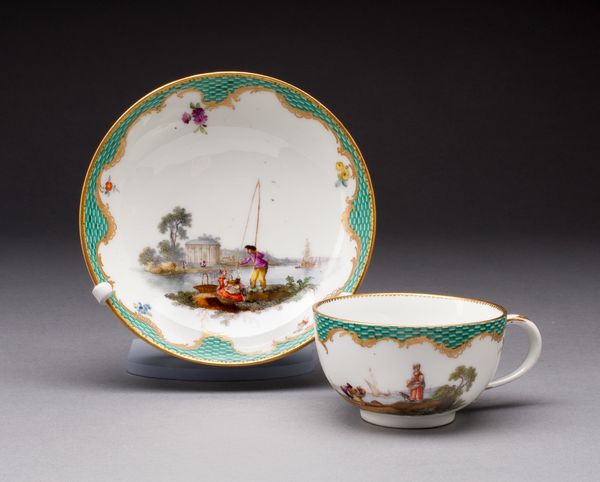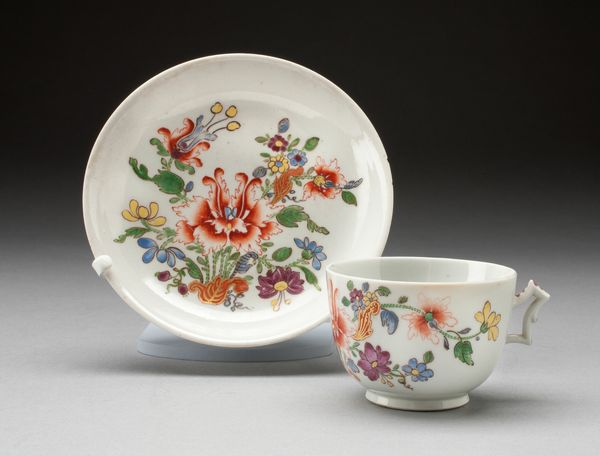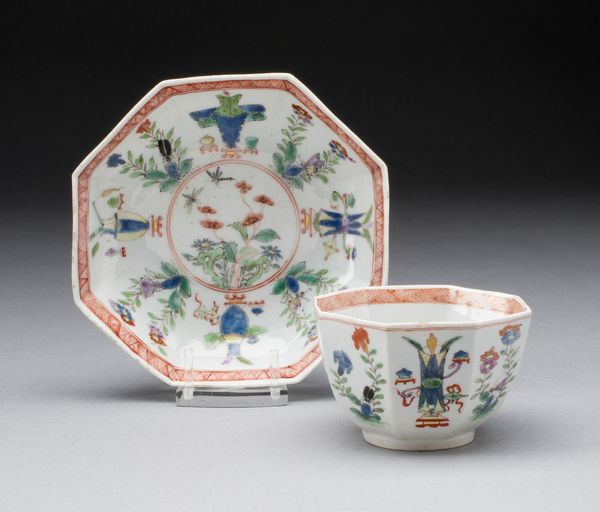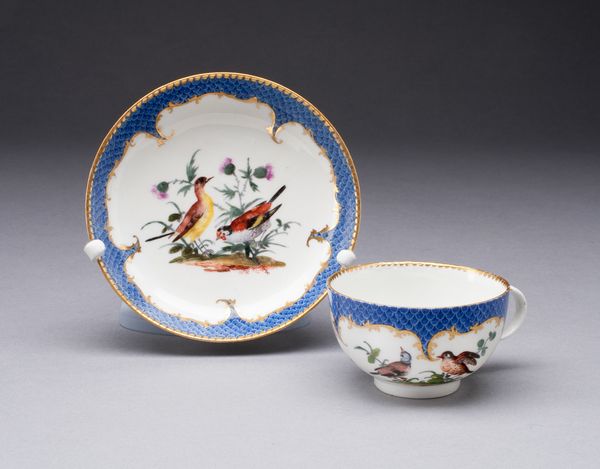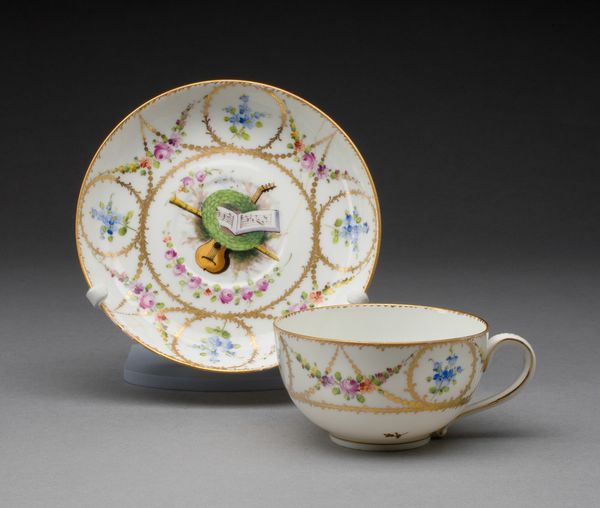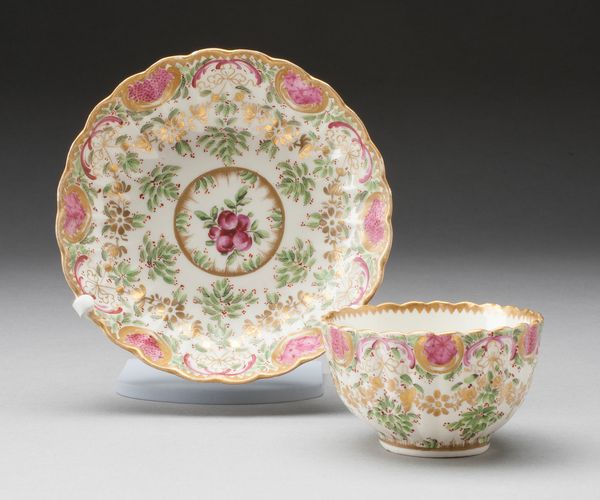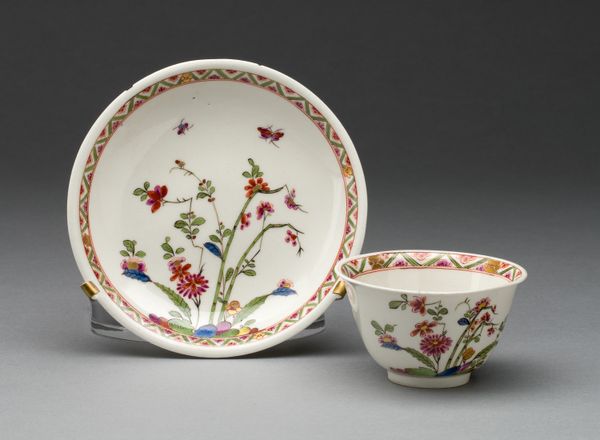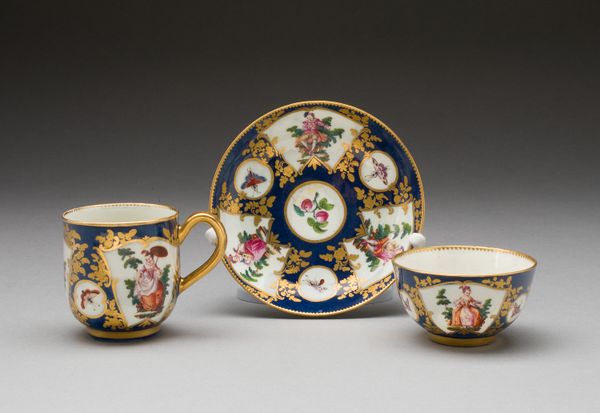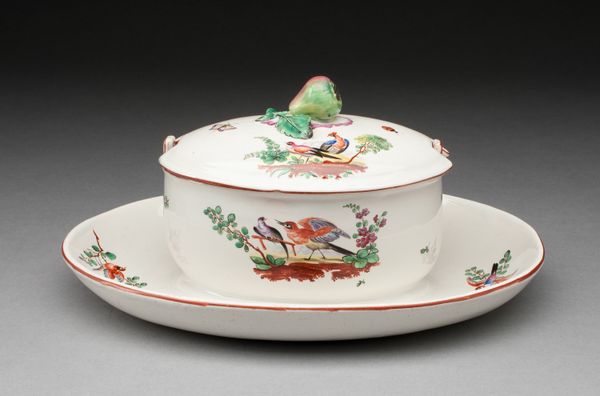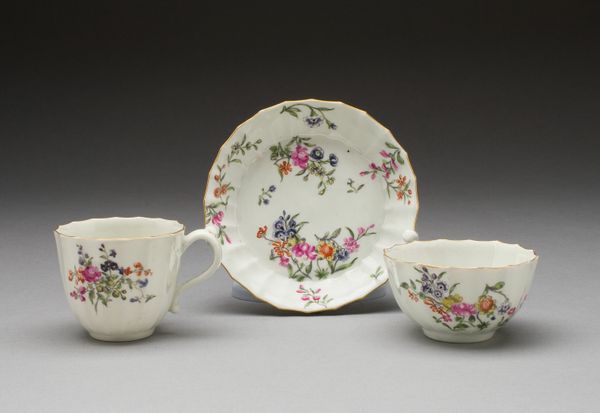
painting, ceramic, porcelain
#
painting
#
ceramic
#
porcelain
#
figuration
#
ceramic
#
genre-painting
#
history-painting
#
decorative-art
#
miniature
#
rococo
Dimensions: Cup: 5.1 × 9.8 cm (2 × 3 7/8 in.); diam. 7.8 cm (3 1/16 in.); Saucer: H. 3.3 cm (1 5/16 in.); diam. 13.7 cm (5 3/8 in.)
Copyright: Public Domain
Curator: What strikes me first about this porcelain cup and saucer is its daintiness juxtaposed with a battle scene! Editor: Yes, it's quite the paradox. We're looking at a "Cup and Saucer" made around 1770 by the Ludwigsburg Porcelain Factory. The vibrant scenes wrapping the ceramic forms offer more than mere decoration, though. They're steeped in narratives, speaking to historical events, and perhaps something more complex than we first assume. Curator: Precisely! The iconography used within genre scenes reflects not just the events of history painting, but it’s emotional legacy and cultural impact. The small scale draws us in for an intimate examination. Editor: But intimate with what, really? Are we celebrating military prowess, or witnessing its brutal consequences? Are we meant to hold victory in our hands while sipping tea, or acknowledge the spoils are borne from violence? It speaks volumes about how history is consumed, quite literally, through objects like these. It domesticates trauma, if that makes sense. Curator: That tension you’re describing is something I definitely agree with, the scenes have the feeling of a historical narrative made digestible and aesthetically pleasing. The artist manages to capture that transitional moment perfectly! It presents something complex in the way that symbols usually do, something not quite solved or decided upon. Editor: The gilded rim also complicates things for me. Luxury bordering historical reflection—almost as if the wealthy, who owned pieces like these, were literally and metaphorically glossing over reality. Does it celebrate military victory, or attempt to soften and minimize war? And whose narrative were these porcelain factories serving? The aristocratic elite, obviously. Curator: You make an excellent point. By framing violence in this domestic setting it shifts our perspective to how history and collective identity gets commodified through design, thus perpetuating those visual regimes that inform power relations, status and identity. Editor: Right. Seeing those historical paintings miniaturized onto a teacup makes me consider our own modern ways of processing conflict, perhaps on a screen. Curator: This object presents a lens onto a very different experience of visual culture from a very different time. It can remind us of the enduring power of imagery in shaping society. Editor: And to be critical about the symbols that decorate even our most mundane daily rituals.
Comments
No comments
Be the first to comment and join the conversation on the ultimate creative platform.
